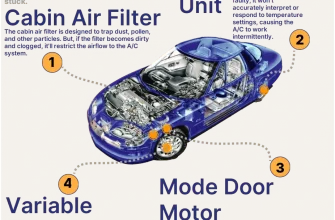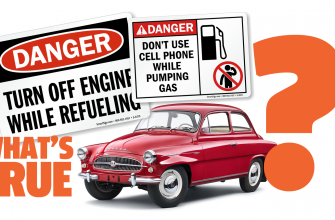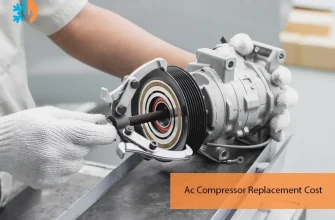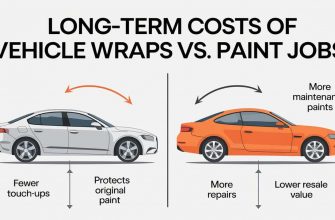The check engine light (CEL) is one of the most dreaded indicators on a vehicle’s dashboard. It’s a small, often yellow, icon that can send car owners into a frenzy. But what does it really mean, particularly regarding emissions issues? Let’s delve into the significance of the check engine light and the emissions problems that could be lurking beneath the surface.
What Triggers the Check Engine Light?
The check engine light is your vehicle’s way of communicating that something is amiss. It could be a minor issue, or it could signify a serious problem. Common triggers include:
- Oxygen Sensor Malfunction: This sensor measures the amount of unburned oxygen in the exhaust. A failing sensor can lead to increased emissions and poor fuel economy.
- Loose or Damaged Gas Cap: A loose gas cap can cause fuel vapors to escape, leading to emissions issues. It’s a simple fix, but it can trigger the CEL.
- Catalytic Converter Issues: The catalytic converter is crucial for reducing harmful emissions. If it’s failing, the check engine light will come on.
- Mass Airflow Sensor Failure: This component measures the amount of air entering the engine. A malfunction can disrupt the air-fuel mixture, causing higher emissions.
Understanding Emissions Systems
Modern vehicles are equipped with complex emissions control systems designed to minimize pollutants. Understanding these systems can help you grasp why the check engine light illuminates:
- Exhaust Gas Recirculation (EGR): The EGR system recirculates a portion of the exhaust back into the engine to reduce nitrogen oxides (NOx) emissions. If this system fails, it can activate the check engine light.
- Evaporative Emission Control System (EVAP): This system prevents fuel vapors from escaping into the atmosphere. Leaks in the EVAP system are common culprits for triggering the CEL.
- Onboard Diagnostics (OBD-II): This system monitors various engine components and emissions controls. If it detects a fault, it sends a signal to illuminate the check engine light.
What to Do When Your Check Engine Light Comes On
Seeing the check engine light can be alarming, but don’t panic. Here’s a step-by-step approach to handling this situation:
- Check for Obvious Issues: Start with the basics. Is your gas cap loose? Are there any noticeable leaks?
- Read the Codes: Use an OBD-II scanner to read the trouble codes stored in your vehicle’s computer. These codes provide insight into what might be wrong.
- Consult a Professional: If the issue isn’t obvious or you’re unsure, take your vehicle to a certified mechanic. They will have the tools and expertise to diagnose and fix the problem.
- Address Emissions Issues Promptly: Ignoring emissions-related problems can lead to costly repairs and may result in failing an emissions test.
The check engine light is more than just a warning; it’s a critical tool for maintaining your vehicle’s health and ensuring it meets emissions standards. By understanding the causes of the CEL and the importance of emissions systems, you can take proactive steps to keep your vehicle running smoothly and environmentally friendly. Remember, when in doubt, consult a professional to safeguard your ride and the planet.
Preventive Maintenance: A Key to Emission Control
Understanding the nuances of your vehicle’s emissions systems is only half the battle. Preventive maintenance plays a vital role in ensuring your car runs efficiently and meets environmental standards. Regular inspections can help identify minor issues before they escalate into significant problems. Here are some essential tips:
- Regular Oil Changes: Fresh oil not only lubricates engine components but also helps keep emissions low. Old, dirty oil can lead to a buildup of harmful substances that may trigger the check engine light;
- Filter Replacements: Air and fuel filters should be replaced according to your vehicle’s maintenance schedule. Clogged filters can impede airflow and fuel delivery, leading to inefficiencies and increased emissions.
- Scheduled Tune-Ups: A professional tune-up can optimize engine performance and reduce emissions. During a tune-up, mechanics check various components, including spark plugs, ignition systems, and fuel injectors, ensuring everything is in peak condition.
- Emissions Testing: Many regions require periodic emissions testing, which can help you stay informed about your vehicle’s environmental impact. If your vehicle fails, it’s crucial to address the issues promptly.
The Cost of Ignoring the Check Engine Light
While it might be tempting to ignore a check engine light, doing so can lead to significant consequences. Beyond the immediate risk of damaging your vehicle further, neglecting emissions-related issues can result in costly repairs down the line. Moreover, failing to address these problems may also lead to:
- Legal Penalties: Many jurisdictions enforce strict emissions regulations. Driving a vehicle that doesn’t meet these standards can lead to fines and even the inability to register your car.
- Environmental Impact: Increased emissions contribute to air pollution and environmental degradation. By addressing emissions issues, you’re not just helping your vehicle; you’re also contributing to a healthier planet.
- Decreased Resale Value: A vehicle with unresolved check engine light issues will likely have a lower resale value. Potential buyers may be wary of investing in a car that has a history of emissions problems.
The check engine light should never be taken lightly, especially when it comes to emissions issues. Understanding what triggers this warning, knowing the importance of emissions systems, and committing to regular maintenance can save you time, money, and stress in the long run. By being proactive, you can ensure that your vehicle runs efficiently while also playing your part in protecting the environment. Remember, a well-maintained vehicle is not just a smart investment; it’s a responsible choice for the planet.
So, the next time that tiny light flickers on your dashboard, take a moment to consider its implications. Embrace the opportunity to learn, act, and keep your vehicle—and the environment—in top shape.









I appreciate how clearly this piece explains the significance of emissions issues. It’s great to finally understand what my car is trying to tell me with that pesky light!
This article does a fantastic job of breaking down the complexities of the check engine light! I learned so much about what can trigger it. Highly informative!
A must-read for any car owner! The details about the oxygen sensor and catalytic converter were particularly enlightening. Thanks for sharing this valuable information!
I loved how this article simplifies technical jargon related to vehicle emissions. It really helped me understand my car better and what to look out for!
An excellent guide on emissions systems and their relation to the check engine light. I feel more confident addressing potential issues with my vehicle now!
This article is a lifesaver! I had no idea that something as simple as a loose gas cap could trigger the check engine light. Very well written and informative.